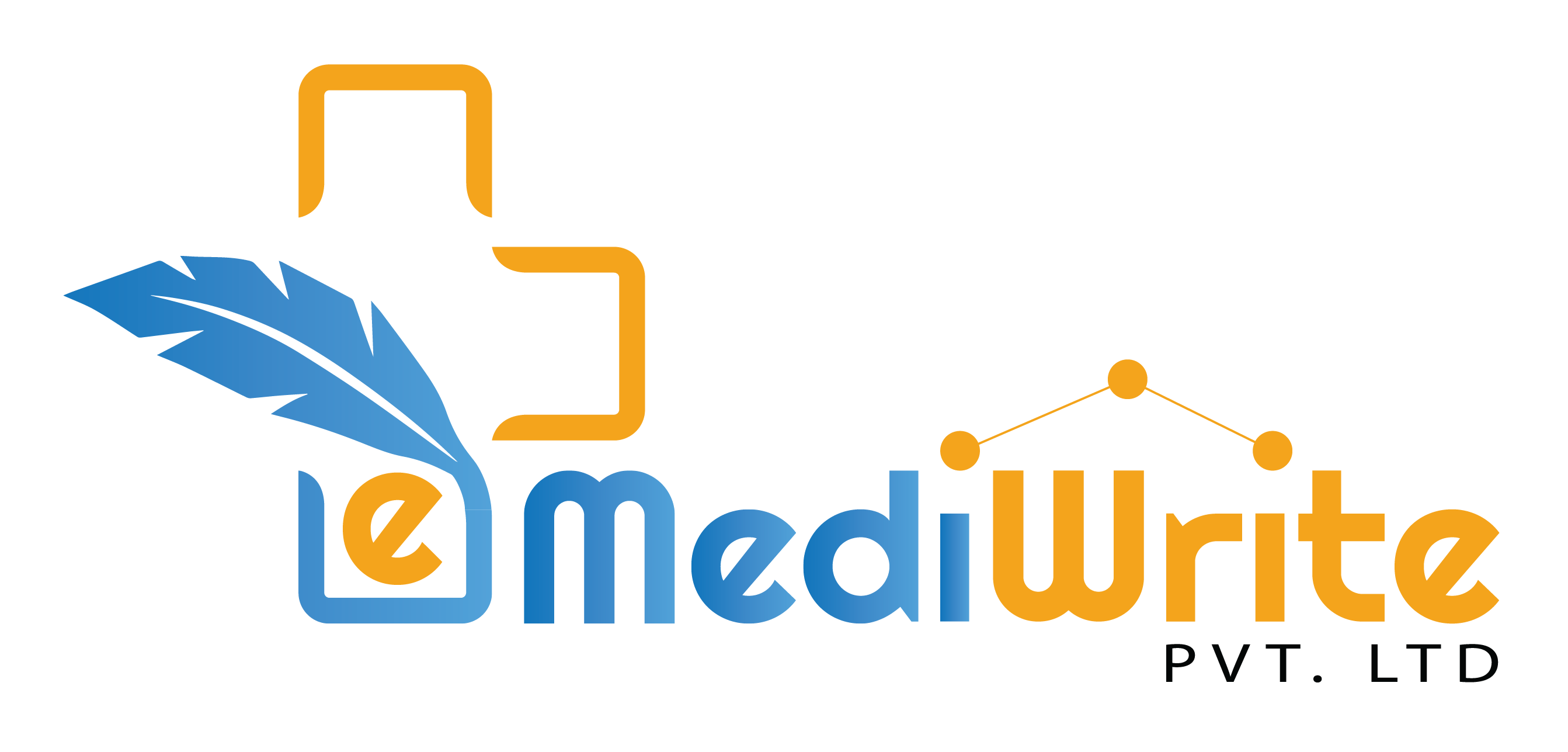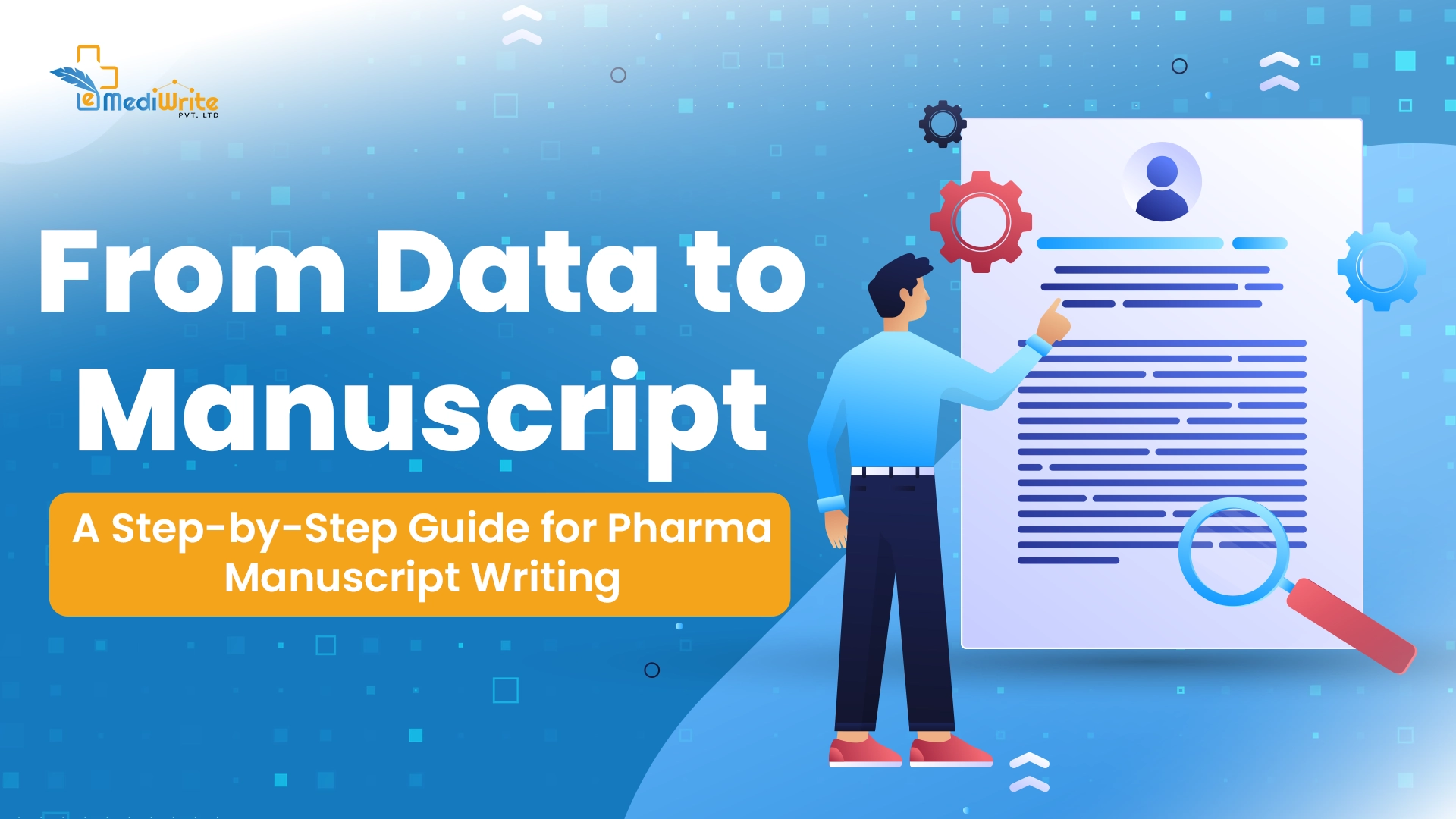Introduction
In the pharmaceutical industry, turning research data into a publishable manuscript is both an art and a science. Every detail matters from data interpretation and structure to language accuracy and regulatory compliance. Pharma manuscript writing bridges the gap between research findings and global medical communication, ensuring that critical discoveries reach healthcare professionals, regulatory agencies, and scientific communities worldwide.
This guide walks you through the pharma manuscript development process, explores common challenges, and highlights how platforms like eMediWrite streamline and enhance manuscript creation for pharma companies.
What Is Pharma Manuscript Writing?
Pharma manuscript writing refers to the process of transforming raw scientific data from clinical trials, laboratory studies, or medical research into a structured, peer-review-ready document suitable for publication in scientific journals.
Unlike general scientific writing, medical manuscript writing pharma requires adherence to strict ethical guidelines, journal standards, and data integrity principles. The manuscript must clearly communicate methodology, findings, and implications while maintaining accuracy, transparency, and compliance with regulations such as ICMJE, GPP, and CONSORT.
Effective manuscript development for pharma ensures that the scientific message is clear, credible, and compliant with regulatory and ethical expectations all while appealing to an academic audience.
Also Read This: 5 Strategies for Balancing Pharma Product Innovation with Regulatory Body Mandates
The Pharma Manuscript Development Process
The pharma manuscript development process involves multiple coordinated stages from data collection to submission. Each stage demands precision, attention to detail, and collaboration between scientists, medical writers, and reviewers.
Research and Data Gathering for Pharma Manuscript Development
The foundation of any strong manuscript lies in robust data. Researchers must collect and analyze all relevant findings from clinical studies, preclinical experiments, or regulatory submissions.
Key steps include:
- Ensuring data accuracy and completeness.
- Analyzing clinical outcomes using standardized methodologies.
- Summarizing statistical findings in a clear, reproducible format.
A transparent data presentation not only strengthens credibility but also supports reproducibility a core principle in pharma manuscript writing.
Structuring the Pharma Manuscript
A well-structured manuscript enhances readability and ensures compliance with journal guidelines. Most manuscript development for pharma follows the IMRaD format Introduction, Methods, Results, and Discussion.
Writing the Abstract and Introduction
The abstract provides a concise summary of the study’s purpose, methods, results, and conclusions. It should capture the essence of the research and attract reviewers’ attention.
The introduction explains the study’s rationale, highlights the research gap, and defines the objectives. In pharma manuscript writing, clarity and conciseness are key excessive background information can dilute the focus.
Also Read This: The Untold Power of Public Relations in the Medical World
What Are the Key Elements of the Pharma Manuscript Writing Process?
A successful pharma manuscript writing process requires meticulous attention to each section, ensuring the data narrative remains consistent and compelling.
Writing the Results and Discussion Sections
The results section presents findings objectively, supported by tables, figures, and statistical analyses. Avoid interpretation here that belongs in the discussion.
In the discussion section, interpret results in the context of existing literature, highlight study significance, and address limitations. This section demonstrates the scientific impact of your research and connects the data to real-world clinical implications.
Combining clarity, evidence, and consistency in these sections is central to mastering the pharma manuscript development process.
Peer Review and Revision Process in Pharma Manuscript Writing
The peer review phase is crucial for validation and quality assurance. Reviewers evaluate study design, data integrity, and interpretation accuracy.
In pharma manuscript writing, feedback from peers and subject-matter experts helps refine clarity, strengthen argumentation, and correct potential errors. Iterative revisions based on peer input ensure the manuscript meets the high standards of scientific publication.
Also Read This: Strategies That Work: The Role of Content Marketing in Healthcare
How to Overcome Common Challenges in Pharma Manuscript Writing?
Despite experience and resources, even expert writers face obstacles in pharma manuscript writing. Understanding and addressing these early improves efficiency and publication success.
Time Management and Deadlines in Pharma Manuscript Development
Tight deadlines are one of the biggest hurdles in pharma manuscript development process management. To stay on schedule:
- Establish a clear timeline for data analysis, writing, and review.
- Use project management tools for tracking progress.
- Encourage collaboration between medical writers, statisticians, and researchers.
Prioritizing organization and communication is vital to maintaining quality and meeting journal submission deadlines.
Other challenges include ensuring data accuracy, aligning with journal formatting requirements, and managing multi-author collaborations all of which can be simplified with structured workflows and professional guidance.
Also Read This: Navigating Regulatory Challenges: How eMediWrite Helps Pharma Marketers
Medical Manuscript Writing Pharma: How Is It Different from Other Writing?
Medical manuscript writing pharma differs from academic or general scientific writing due to its regulatory context, audience expectations, and precision standards.
Key distinctions include:
- Regulatory Compliance: Pharma manuscripts must adhere to ICH, GPP, and ICMJE standards.
- Ethical Responsibility: Transparency in reporting adverse events and funding disclosures.
- Technical Accuracy: Emphasis on pharmacokinetics, efficacy, and safety data.
- Target Audience: Peer reviewers, regulatory bodies, and healthcare professionals.
Writers involved in manuscript development for pharma must balance scientific depth with clarity while ensuring full compliance with journal and ethical guidelines.
How EmediWrite Helps Your Healthcare Business in Pharma Manuscript Writing?
eMediWrite simplifies the complex process of pharma manuscript writing through its specialized medical writing solutions designed for pharmaceutical and healthcare organizations.
Here’s how eMediWrite adds value to your pharma manuscript development process:
- Expert Medical Writers: Our team includes writers with life sciences and regulatory experience.
- Structured Templates and Tools: Streamline the pharma manuscript writing process for consistency and accuracy.
- Data-to-Manuscript Automation: Turn raw data into publication-ready drafts faster.
- Peer Review Support: Ensure compliance with journal standards and scientific integrity.
- Regulatory Compliance Assurance: Maintain alignment with ICMJE, CONSORT, and industry codes.
By integrating eMediWrite into your workflow, you can transform the manuscript development for pharma process from time-consuming to seamless helping your research reach the right audience effectively and ethically.
Conclusion
Pharma manuscript writing is a vital component of scientific communication in the pharmaceutical industry. From transforming complex datasets into coherent narratives to ensuring compliance with global publication standards, the process requires both skill and strategy.
By mastering the pharma manuscript development process and applying the right tools and expertise, organizations can produce manuscripts that inform, influence, and inspire confidence in the medical community.
Partnering with eMediWrite ensures your research is communicated with clarity, accuracy, and compliance turning data into impactful scientific publications.
FAQ
What are the key steps involved in the pharma manuscript writing process?
The pharma manuscript writing process includes data collection, analysis, structuring the manuscript, drafting sections, peer review, and final submission.
How can I ensure my pharma manuscript is well-structured for publication?
Follow journal guidelines, maintain logical flow, and use clear headings and figures. The IMRaD structure ensures readability and compliance.
What challenges do writers typically face when developing a pharma manuscript?
Common issues in manuscript development for pharma include tight deadlines, inconsistent data, and unclear author contributions.
Why is the peer review process so important in pharma manuscript writing?
Peer review enhances accuracy, transparency, and credibility by identifying weaknesses before publication.
What data should be included in a pharma manuscript, and how should it be presented?
Include verified clinical and statistical data, presented using standardized tables and figures for clarity.
How do I manage deadlines and time effectively during pharma manuscript writing?
Plan early, assign clear responsibilities, and use digital tools or professional platforms like eMediWrite to streamline workflow and communication.





